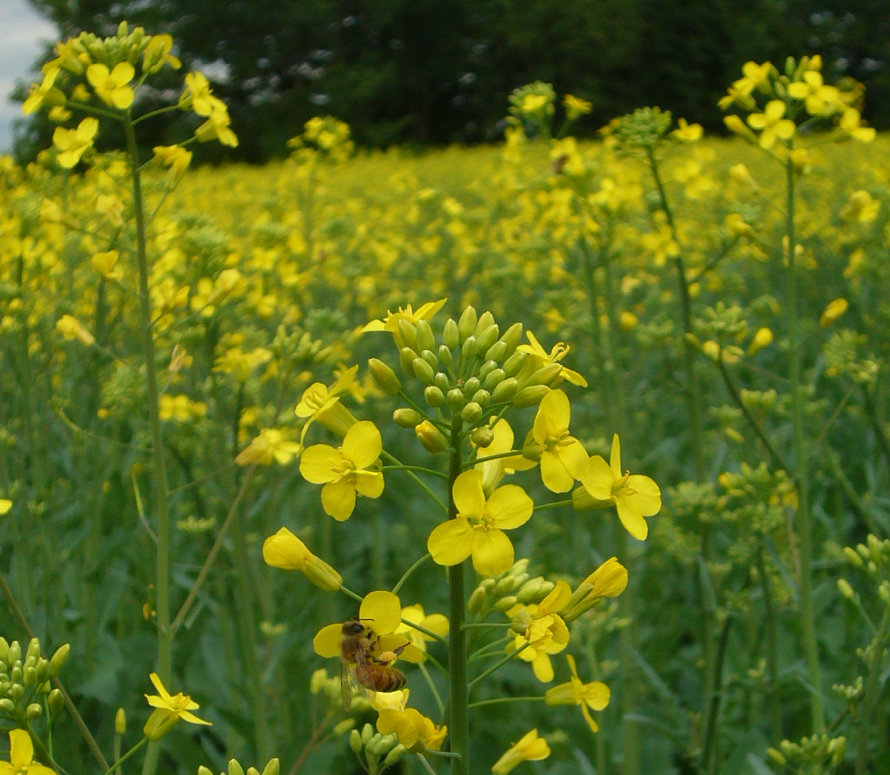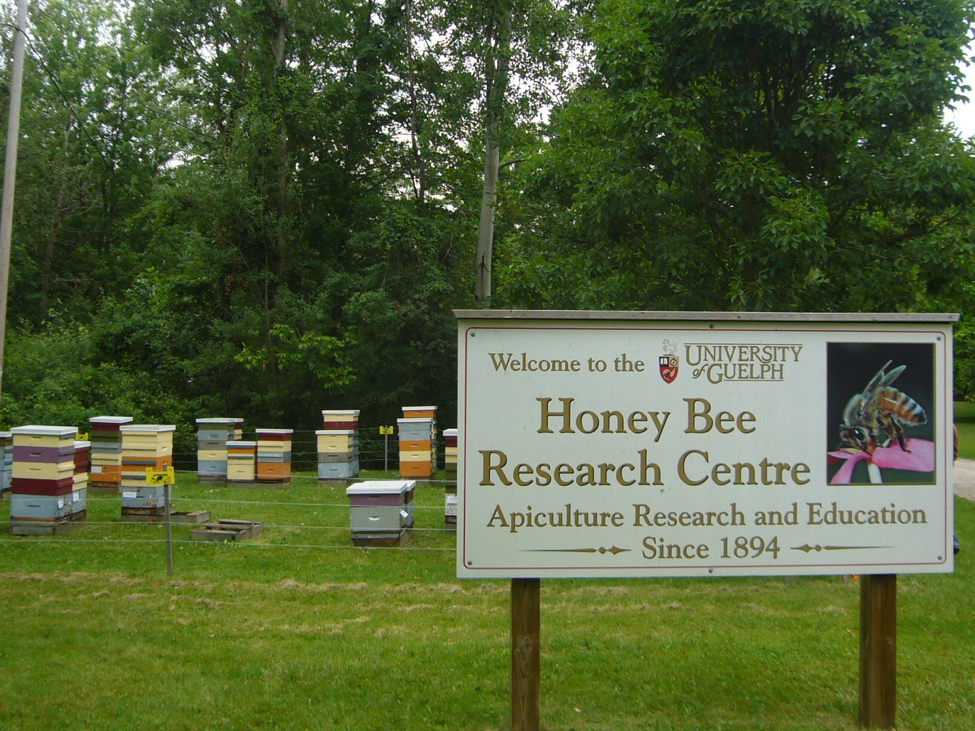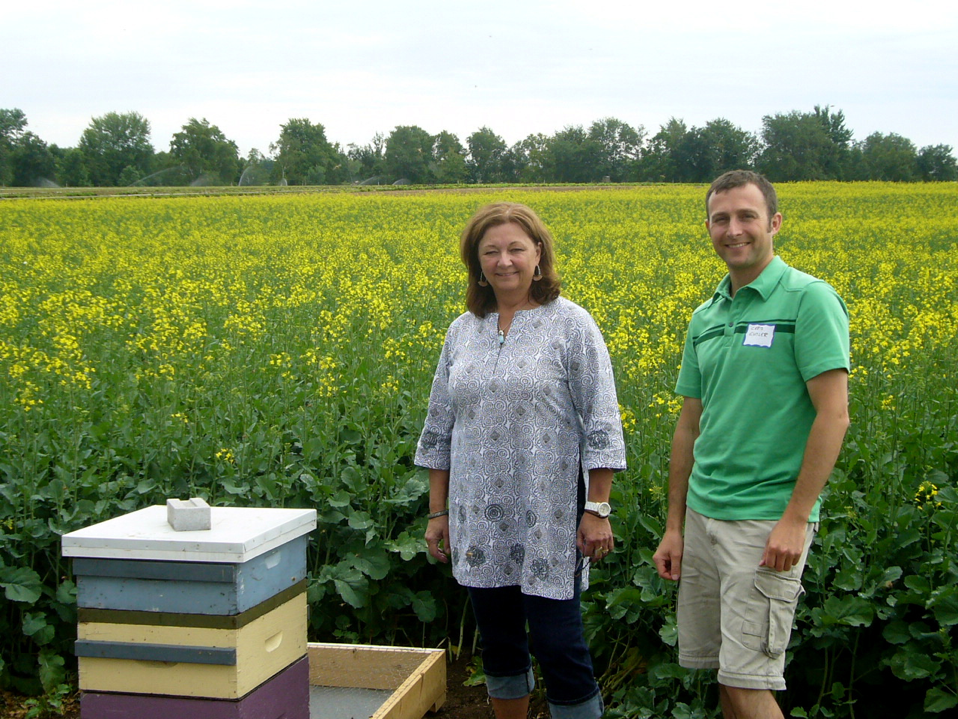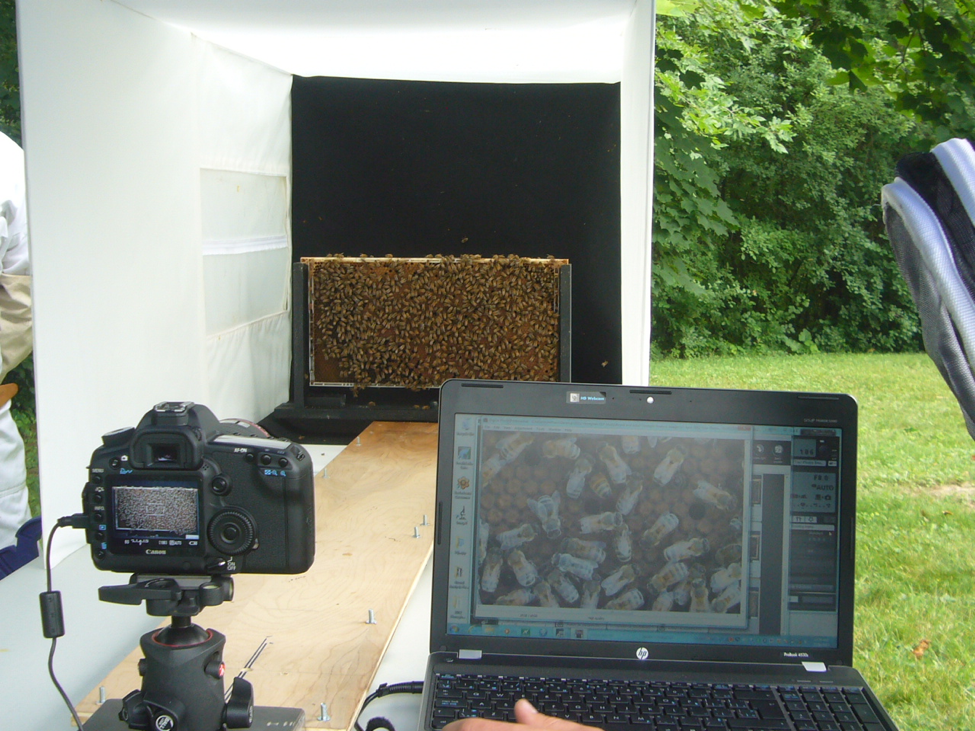A New Large-Scale Trial of Clothianidin
A New Large-Scale Trial of Clothianidin
Randy Oliver and Brett Adee
First published in ABJ September 2012
The process for approving a new pesticide is similar to that of approving a new drug. In the case of a drug, randomized controlled clinical trials are run to demonstrate efficacy and safety. Then once the drug is approved for use, it essentially undergoes a more extensive “uncontrolled trial,” in which regulators watch for reports of adverse effects, which, if they are problematic, could result in either relabeling of the drug, or its withdrawal from the market.
Due to reports of adverse effects from the neonicotinoids, both the EPA and Canada’s Pest Management Regulatory Agency (PMRA) are reevaluating the registrations of these insecticides [1]. PMRA has called for Bayer to expand one of the original studies used for the registration of clothianidin as a seed treatment for canola. That study [2], performed in 2005-2006, has been questioned on a few points, mainly:
1. Due to the small plot sizes, bees could have foraged off the test plantings and avoided the treated crop, or been exposed to insecticide residues from other flora.
Clothianidin residues showed up in some nectar samples from the control colonies, indicating that the control bees foraged to some extent on the treated plots, thus compromising the controls.
Figure 1. Canola is a favored plant for systemic insecticide studies, since bees avidly forage on its nectar and pollen, both of which contain residues of the seed treatments (typically <2ppb). Virtually all canola seed is treated with fungicides plus the neonicotinoid clothianidin.
Canola seed is normally treated with fungicides to ensure adequate germination, so it is easy for seed companies to also add clothianidin to control the devastating flea beetle, which attacks the young plants. The effectiveness of this environmentally-friendly treatment (no spraying necessary) has allowed growers to massively expand canola plantings over the past 15 years—to the current 20 million acres.
Bayer CropScience grows hybrid canola seed in Canada, and in an ironic twist, is thereby the largest renter of honey bee pollination services in Canada, and is thus highly motivated to ensure that the product does not harm bees. In late June, Bayer invited representatives of the regulatory agencies, Canadian and U.S. beekeepers (including the authors), seed suppliers, and grain growers to the University of Guelph to familiarize us with the experiment, and to solicit our input on the design.
This new trial should be of interest to U.S. commercial beekeepers, since about a quarter of commercial hives spend the summer in the Dakotas [3]. Canola is becoming a favored crop in the prairies, with over a million acres (1700 square miles) to be planted in North Dakota alone this year.
Since virtually all canola seed is treated with clothianidin or its precursor, thiamethoxam, this trend suggests that plenty of colonies will be ingesting residues in their diet (Figure 1).
The crop protection companies[1] typically hire independent investigators to run field trials of their products in order to avoid charges of conflict of interest (Figure 2). For this trial, they again hired University of Guelph environmental scientists Drs. Cynthia Scott-Dupree and Chris Cutler to repeat their previous study in more and larger plots (Figure 3). Bayer scientist Dr. Dave Fischer (Environmental Toxicology and Risk Assessment) presented details of this ambitious study, designed to eliminate any questions about the original studies:
1. The scientists went to great effort to locate ten widely separated 2 hectare (5 acre) plots in which to plant canola, with the added requirements that no other canola, and little competing forage, would be growing within normal flight range (10 km) (Brett and I confirmed that the test plots appeared to be surrounded largely by forest or agricultural land without competing forage).
2. The distance between plots would prevent any cross-plot foraging, so that the researchers would know that any canola pollen in the hives would have necessarily come from the test plot.
3. The researchers are trapping pollen to confirm the degree of foraging on the canola plots.
4. The stocking rate was low enough that each 2 hectare plot should provide adequate forage for the 4 colonies.
5. The ten plots should increase the statistical strength of the study.
During the tour, Dr. Fischer solicited comments from all invitees to make sure that we were satisfied with the protocol. We (Brett and Randy) raised several questions, which were answered to our satisfaction. All parties were receptive to our comments. We suggested a change in protocol, which was subsequently implemented–we asked the researchers to change the holding yard to which the colonies were to be moved after bloom to a non agricultural area in order to eliminate any further exposure to clothianidin (as from soybeans or corn). This would ensure that the control group was truly a clothianidin-free control. Overall, we found both the Bayer reps and the investigators willing and determined to run an honest and unquestionable trial.
[1] I hesitate to call the Plant Protection Products companies “chemical companies” anymore, as the leading companies are moving into biological products, genetics, and RNAi technology.
Figure 2. In order to avoid implications of bias, plant protection product companies routinely hire independent scientists to perform the required field trials of their products. Principal investigator Dr. Scott-Dupree’s bio reads, ““My research interests include integrated management of insect pests in horticultural, fruit, field and greenhouse crops using environmentally compatible control methods, insecticide resistance management, and the impact of agro-ecosystems on non-target organisms, including beneficial insects such as honey bees, bumble bees, native bees and natural enemies or biological control agents of insect pests.”
The investigators randomly chose half the plots to plant with clothianidin-treated seed; the other half serve as controls, and were sprayed for flea beetles a month before bees were introduced. The field technicians paid great attention to detail to make sure that each field was planted in an identical manner.
Four colonies were placed in the center of each field at the beginning of bloom, fitted with both pollen traps (normally open) and dead bee traps. Each plot provides enough forage for four colonies, and the pollen will be analyzed to determine whether bees foraged off site, and to quantify any pesticides present in the pollen (nectar will also be tested).
Figure 3. Principal investigators Drs. Cynthia Scott-Dupree and Chris Cutler next to one of the test colonies fitted with a dead bee trap in front. Four hives were placed at the center of each 5-acre field of canola, with no other canola, and little other forage, within flight range.
Periodically the research teams (composed of grad students) will pull each brood frame from each hive, and photograph it to be analyzed by a fancy (and expensive) computer program which quantifies the coverage by adult bees, as well as the amount of sealed brood (Fig. 4).
Figure 4. This specially-designed system will be used to photograph both sides of each frame in the field (with and then without bee coverage). A computer program then determines the number of bees and area of sealed brood.
At the point where only 25% of bloom remains, all the hives will be removed from their test plots and taken to a single non agricultural fall/winter yard to track colony overwinter survival. The research teams will collect data on colony weight, honey yield, adult bee mortality, brood production, colony strength (adult bee coverage), queen events, and residues in nectar, honey, pollen, and wax. The entire trial with be performed following GLP’s—the highest standard of laboratory practices, with meticulous recordkeeping of every single detail.
To us, the study design appears sound, and should address the “deficiencies” of the 2006 trial for which EPA downgraded it from “core” to “supplemental” [4]. An important point for critics to keep in mind is that this study is being performed in the full light of day, and any concerned party is free to contact either the researchers or Bayer CropScience if they have any questions.
If all goes well, the results of this study should answer questions about the impact, if any, upon colony population and productivity, from the seed treatment of canola with clothianidin (Poncho). These colonies will be followed through the winter, so that any short- or long-term effects should be observed.
Over the course of the day-long tour and dinner, all parties involved—the Bayer scientists, the government regulators, the seed companies, the growers, and the beekeepers—had ample opportunity to openly discuss issues and solutions. We were able to speak candidly with a number of Bayer environmental scientists from Germany, Canada, and the U.S., who all confirmed the high interest that Bayer has in developing bee-friendly products. Over dinner, I asked Dr. Christian Maus (Global Pollinator Safety Manager for Bayer CropScience) whether Bayer was concerned about finding out something negative when they run a new trial. He replied that if indeed there was a problem with one of their products, Bayer would want to be the first to know of it!
Throughout the tour, the atmosphere was very positive for working together to support the growers, while at the same time protecting bee health. Our overall impression was that Bayer is acting in good faith and that Drs. Cutler and Scott-Dupree are earnestly conducting a well-designed trial that should detect any measureable effect of clothianidin upon colony productivity and survival.
References
[1] Health Canada (2012) Re-evaluation of Neonicotinoid Insecticides http://www.hc-sc.gc.ca/cps-spc/pubs/pest/_decisions/rev2012-02/index-eng.php
[2] Cutler GC and CD Scott-Dupree (2007) Exposure to clothianidin seed treated canola has no long-term impact on honey bees. J Econ Entomol 100:765–772 (Broken Link!) http://dspace.lib.uoguelph.ca/xmlui/bitstream/handle/10214/2621/32546.pdf?sequence=1
[3] (Broken Link!) http://usda01.library.cornell.edu/usda/current/Hone/Hone-03-30-2012.pdf
[4] http://www.epa.gov/opp00001/about/intheworks/clothianidin-response-letter.pdf







